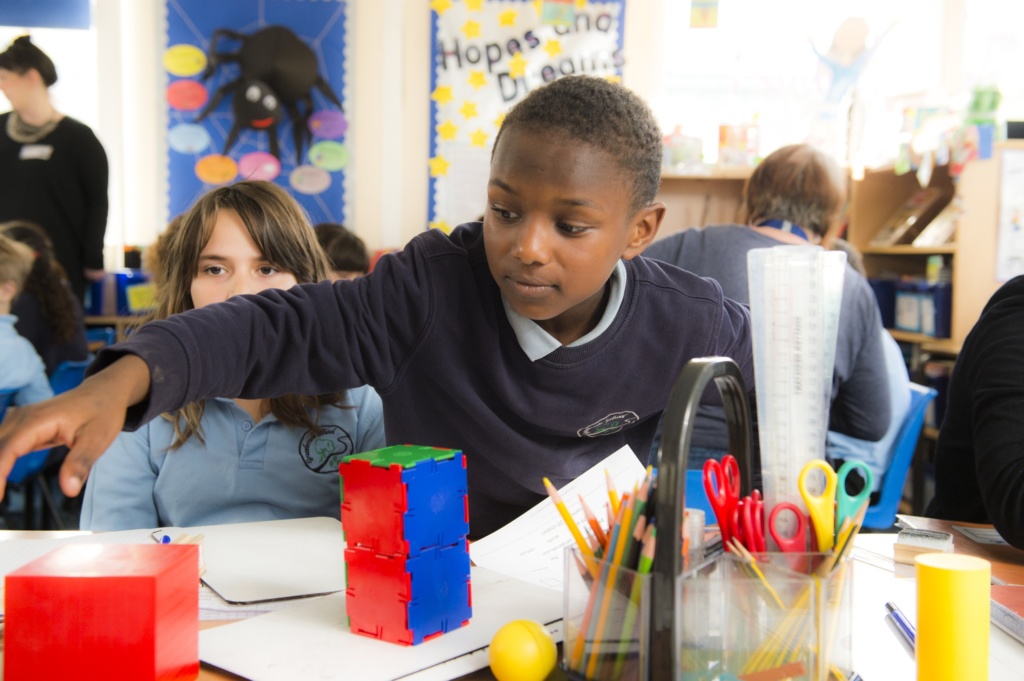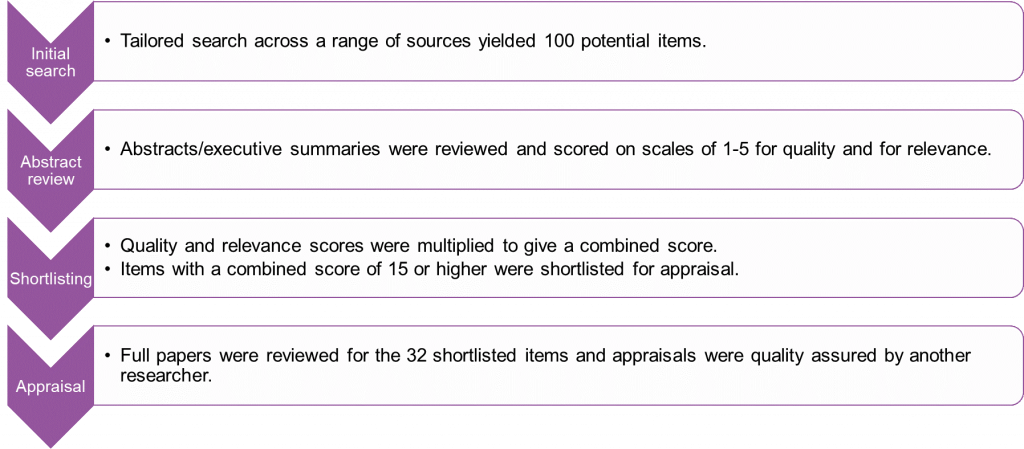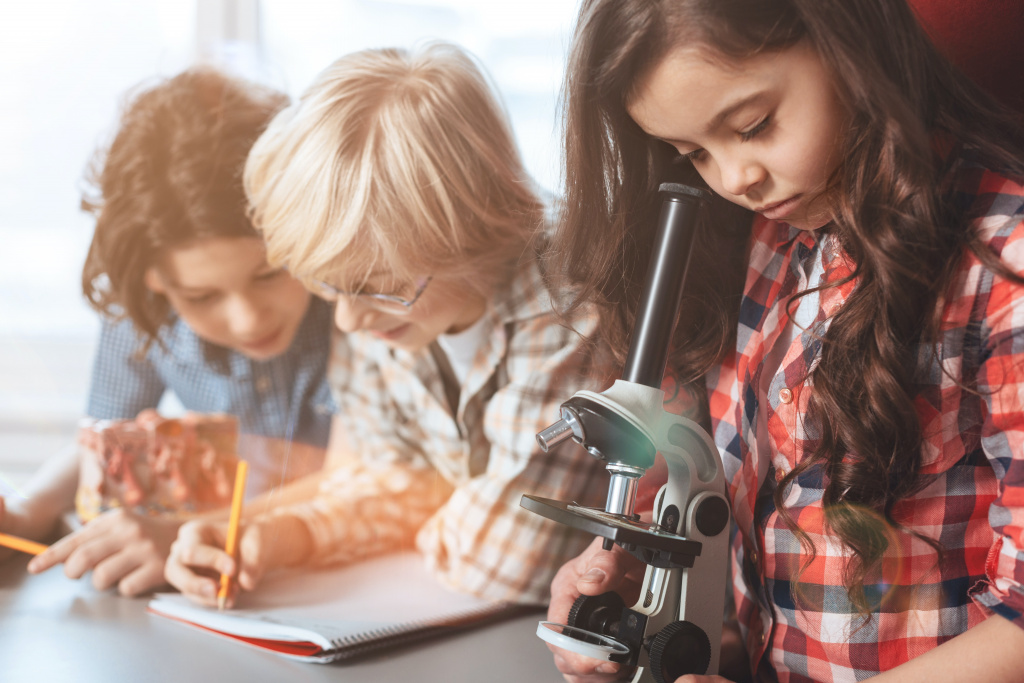
Introduction from White Rose Education
Education technology is rapidly evolving, so making the best use of multimedia resources in the classroom is pivotal for enhancing teaching and learning experiences in mathematics and science.
At White Rose Education, we know the onset of the COVID-19 pandemic led to a greater reliance on technology in education due to widespread school closures. This shift towards greater digital resource usage, including recent advancements in AI, fuelled our curiosity to explore recent research trends concerning the use of multimedia materials in classroom settings.
We believe increasing integration of multimedia resources can bolster classroom learning. Indeed, we are producing numerous multimedia resources. These are used by thousands of teachers worldwide and we want to ensure they are the best they can be. We felt the best way to do this was to explore the recent research landscape, with the aim of understanding the optimal applications of technology and multimedia materials in mainstream maths and science classrooms. We wanted to look at what currently works and what we can build on next.
At White Rose Education we have tried to apply Mayer’s Cognitive Theory of Multimedia Learning within all the materials we produce. Our team have regular extensive training on his 12 Principles of Multimedia Learning and hope their application can be seen by teachers who use our materials. Mayer’s research was therefore the starting point for our research project.
Those familiar with the principles will know Mayer advocates the idea that an amalgamation of text and visuals fosters more effective learning compared to text alone. This project with NFER sought to unravel how these principles translate into practice within the realm of maths and science education.
What did we do?
Together, NFER and White Rose Education co-developed a framework of inclusion and exclusion criteria to guide a literature search for a rapid literature review which was undertaken by NFER. The search was designed to explore evidence about the application of Mayer’s Principles to maths and science classroom teaching and learning since 2018. The initial search yielded 100 items which NFER reviewed, shortlisted and discussed with White Rose Education, before undertaking a more detailed appraisal as shown in Figure 1.

What did NFER’s review find?
Our review included studies of both primary- and secondary-aged pupils and covered a range of different maths and science topics as well as different types of resources. This meant it reflected the range of multimedia approaches which have been used in maths and science teaching over the last five years, rather than focusing on studies which used similar approaches. We found few of these studies explored the application of Mayer’s Principles individually, as much of the research individually testing Mayer’s Principles pre-dated our search range (for a summary, see The Cambridge Handbook of Multimedia Learning).
This means, from our review, we cannot determine the strength of the evidence regarding the application of each principle. In addition, some of the studies contained limited details about the content or design of the interventions and few interrogated the individual elements incorporated into resources, making it difficult to determine which element(s) contributed to the success of the programme. Meanwhile, other studies were small-scale and lacked comparison groups, making it difficult to attribute change to the intervention.
That said, these studies still offer valuable insights into the types of multimedia approaches being used and how best to incorporate multimedia activities into maths and science lessons, although this is not an exhaustive framework.
1. Previous meta-analyses indicate computer technology interventions can improve maths attainment
The two meta-analyses (Ran et al., 2021, 2022) we reviewed indicated computer technology interventions:
- can have a positive impact on maths attainment for pupils generally and for pupils with prior lower attainment;
- may benefit younger pupils (pre-school and primary school-aged) more than older pupils;
- may be more effective when lasting up to one academic year than those lasting longer.
For all pupils, using technology to facilitate collaborative working, problem-solving and conceptual development was most effective. Meanwhile, for pupils with prior lower attainment, interventions involving problem-solving tasks, tutoring and game-based interventions were found to lead to the greatest improvements in attainment.
2. Although few studies in our review individually tested the application of Mayer’s Principles to maths and science teaching and learning, those which did generally found positive results
Many of the studies we reviewed stated their resources were designed in accordance with Mayer’s Principles as a whole, rather than testing individual principles. Four studies we reviewed tested some of Mayer’s Principles individually and all reported positive results.
- Applying the spatial contiguity, multimedia, redundancy and modality principles to geometry learning led to higher test scores and improved noticeability of information as well as reduced learning time and visual effort for primary school pupils (Molina et al., 2018).
- Applying the modality principle was also found to improve maths problem-solving skills (Günbas, 2020) and knowledge retention in science (Haavisto et al., 2023).
- Consistent with Mayer’s image principle (which suggests people may not learn better from ‘talking head’ videos), the presence of a talking head video was found to make no difference to pupils’ science learning (Hautala et al., 2018), although around half the pupils in the study preferred the version of the materials with the talking head video.
3. Viewing videos, animations and multimedia presentations shows promise for improving pupil motivation and attainment in science, but the design of these materials is important
Across the papers we reviewed, nearly one-third (ten studies) explored the use of animations and/or visualisations in science teaching. These studies reported:
- a range of benefits including improved pupil attainment, motivation and interest/enjoyment, as well as increases in the perceived value of the subject matter being taught (Günbas, 2020; Haavisto et al., 2023; Kuba et al., 2021; Li et al., 2020; Martinez et al., 2021; Morrison et al., 2021; Ndihokubwayo et al., 2020; Strømme & Mork, 2021; Teplá et al., 2022);
- animations are more effective than static visualisations, especially for teaching science processes (Lin & Wu, 2021; Strømme & Mork, 2021; Ugwuanyi et al., 2020).
However, the design of these visualisations is important.
For example, one study found pupils struggled to engage with eBooks where the content was not fully displayed and the navigation pathways were challenging (Li et al., 2020). These issues quickly led to disengagement with this resource from pupils, demonstrating the importance of carefully considering the design features of multimedia resources, including the application of Mayer’s Principles.
4. There is some evidence visual representations of geometry concepts may help improve geometry attainment
Five of the studies we reviewed explored the use of visualisations in maths, of which four focused on geometry. These four studies:
- were mostly conducted with secondary school pupils;
- involved using software programmes that allowed both the visualisation and the manipulation of shapes, sometimes with the addition of digital games and/or simulations;
- reported positive effects on geometry attainment (Molina et al., 2018; Uwurukundo et al., 2022; Yaftian & Barghamadi, 2022; Žakelj & Klancar, 2022), maths anxiety and motivation (Yaftian & Barghamadi, 2022) relative to comparison groups, providing some evidence to suggest the use of multimedia materials led to improvements in these areas.

The remaining paper looked at the potential of multimedia materials to a) support early mathematical knowledge (number, counting, operations) in pre-school children and b) improve algebraic thinking and number operations in primary school children (McCarthy et al., 2018). Positive effects of the multimedia materials on maths attainment were reported, but there were no comparison groups, making it unclear to what extent the results reflect additional benefits of using multimedia materials.
5. The use of characters and storytelling may be beneficial for engaging preschool and primary school children, but evidence about the impact on attainment is limited
In the studies we reviewed, using characters and stories within multimedia or transmedia (multiple different forms of media including non-digital elements) resources was perceived to:
- facilitate pupil engagement and motivation to learn among pre- and primary school children (Li et al., 2020; McCarthy et al., 2018);
- help provide a ‘route in’ for pupils who did not yet fully understand the concepts;
- support children with different learning styles or additional needs, as they offered multiple avenues for engagement.
Results regarding the impact of using characters and/or storytelling on attainment are more mixed.
- Two studies we reviewed found the use of characters and/or storytelling may lead to improved maths attainment (Günbas, 2020; McCarthy et al., 2018), but these studies lacked comparison groups.
- A more robustly designed study did not find that a character-based intervention benefitted science attainment (Li et al., 2020). But this study was interrupted by Covid-19 meaning the intervention was not delivered as intended. Teachers delivering the programme felt the change to online learning had negatively affected pupil engagement with the programme, which may have reduced any potential attainment benefits.
It is also possible the use of characters is not necessarily beneficial. In one of the studies we reviewed, the use of anthropomorphism (attribution of human form and/or characteristics) to teach science concepts was not found to benefit science attainment in secondary school-aged pupils (Turkoguz & Ercan, 2022). This may be because the pupils were older or because the interventions compared in this study both used multimedia resources.
In addition, while ‘emotional design’ features, such as face-like shapes and warm colours, have been found to support mathematical understanding for younger learners (age five), the effects were not found for slightly older pupils (age seven) (Chiu et al., 2020). The authors hypothesised that although these features created a ‘fun environment’ which encouraged younger pupils to better engage in their learning, they also increased the cognitive load of the task, which may have off-set any benefits for older pupils where higher-order thinking (such as critical thinking and problem-solving) was involved.
6. Evidence regarding teachers’ experiences of using multimedia materials is lacking
None of the studies we reviewed focused on how using multimedia resources in the classroom may affect teacher workload or other teacher-focused outcomes. One study did explore the use of multimedia materials (videos, podcasts, slideshows and interactive reflection activities) to support science teachers’ pedagogical content knowledge (PCK) for argumentation (Loper et al., 2018), but found no differences in outcomes between the teachers who used the text-only or multimedia versions of the materials.
Another study explored teachers’ perspectives on intervention implementation. In this study, teachers were supplied with all the materials and resources (including videos, digital games, songs, hands-on activities and eBooks) needed to implement the programme (Li et al., 2020), which teachers felt made the package easy to implement.
7. Adaptive support and personalised learning platforms may help pupils learn at their own pace
Adaptive support (where material is tailored to learner needs) was built into several of the multimedia tools in the studies we reviewed. There was some evidence that adaptive support may support learning.
- Two studies of a fully automated personalised maths platform found that use of the platform was associated with better maths attainment for secondary school pupils (Brown et al., 2021; Sparx, 2019); although it is not possible to determine which element(s) of the platform contributed to its success.
- A study of primary school children found viewing individually targeted instructional science videos based on quiz performance, in addition to classroom teaching, led to higher test scores on taught topics (Hautala et al., 2018).
However, none of these studies used a comparison group and the study we reviewed which did use a randomised controlled design did not find any benefit to attainment of using an adaptive digital maths curriculum to tailor content to pupils’ needs (Shechtman et al., 2019) compared with schools’ usual maths curriculum.
8. Multimedia is beneficial when used in a way that adds value to existing provision (including teachers) but not when it replaces it, so teachers’ facilitation is important
The findings discussed above primarily relate to the design features of multimedia materials. However, integrating multimedia activities effectively within classroom teaching is equally important. For teachers to focus on facilitating learning, it is important to consider not only what a multimedia tool can do, but what it can elicit in terms of conversations, questions and reflections.
For example, a study exploring the potential of pupil-constructed stop-motion animation films to support learning about geological processes found teacher-prompted conversations and reflections were felt to be key to the success of the activity (Mills et al., 2019). This highlights the importance of considering how multimedia activities are integrated into classroom teaching to capitalise on the teachable moments such activities offer.
In addition, using multimedia in a way that adds value is key.
- Results of a randomised controlled trial which compared the maths outcomes of fifth-grade pupils who participated in a core digital maths curriculum which simply replaced their standard curriculum with those of pupils who participated in the standard curriculum found no differences in attainment between the groups (Shechtman et al., 2019).
- Similarly, a study exploring the use of technology in physics teaching found using technology to increase existing learning had a beneficial impact on attainment, but this was not the case when technology was used to substitute conventional teaching (Zhai et al., 2019).
These results suggest there is no additional learning benefit when multimedia resources are used to replace regular teaching.
Considering what resources to use and – crucially – how teachers facilitate their use and integration in the classroom is therefore critical to the successful application of multimedia approaches in maths and science teaching and learning.
Reflections from White Rose Education
Our journey with NFER into the research landscape uncovered a good number of approaches to integrating multimedia resources in maths and science pedagogy, in studies published since 2018. However, while some studies aligned with Mayer’s Principles, few really explored the application of individual principles, limiting the depth of evidence. Despite limitations in individual studies, we do hope these collective findings offer valuable insights into the diverse multimedia approaches employed, shedding some light on best practices and considerations for incorporating multimedia activities into lessons.
This review showcases various multimedia strategies — from animations to visualisations and storytelling — and begins to delve into their potential to make a difference to classroom learning.
Hopefully, you will see how digital resources, when effectively integrated, can elevate the learning experience. Importantly, the research showed the critical role facilitation plays in harnessing the full potential of multimedia resources within educational settings.
We hope you find this research interesting.
Lillian Flemons, Emma Moore and Pippa Lord are Research Manager, Senior Research Manager and Trials Director at the National Foundation for Educational Research (NFER).
Tony Staneff is the founder and Head of School Development at White Rose Education.
Register for free
No Credit Card required
- Register for free
- Free TeachingTimes Report every month